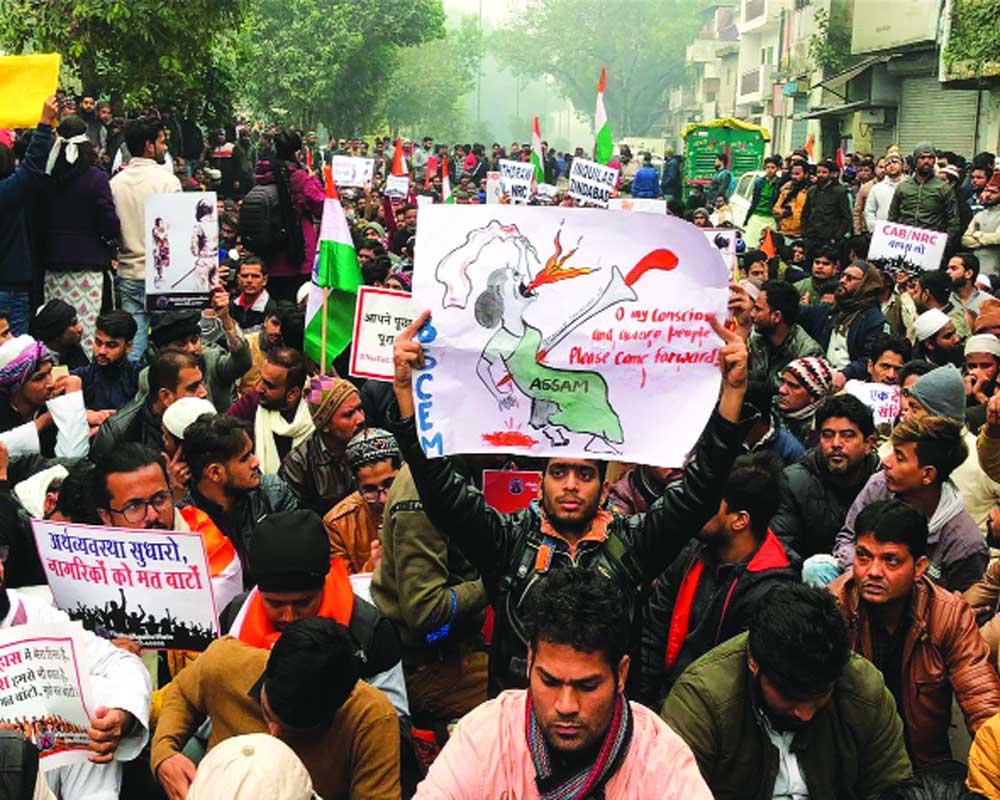Students must be left to study and equip themselves for life. If some want to pursue social causes in an agitational mode, they should do it outside the campuses
On December 20, a weekly newspaper published from Delhi carried a photograph with the caption, “Citizens’ anguish” and the sub caption read, “I am a Christian, my husband a Hindu and my daughter is Indian.” It then referred to pages that carried details about the protests against the controversial Citizenship Amendment Act (CAA). Earlier, demonstrations on such themes were captioned as “students’ agitation” by many media houses. By definition, CAA neither touches upon the veracity of those who are currently citizens of India, nor does it have anything to do with the “students.” But captions on CAA have been catchy. If perusing a genuine cause, where is the need to seek subterfuge under inaccurate and misleading captions? “Student” is a word that has several shades of meaning. At the time of writing this article, this word already surfaced in the front page of newspapers for nearly a week numerous times. In fact, courtesy a major Central university in South Delhi, it has been making headlines for over a year now for all sorts of reasons, including physical intimidation of the Vice-Chancellor in his vehicle. The time has come to step back from the scene of action and take an objective look at the news stories that are made out of such events. What becomes a cause célèbre and what is allowed to peter away if not quietly, at least by default, needs some thought.
To understand any process, a historical look at how it grew across time will help. The first major national leader who mixed educational institutions with political movements was Mahatma Gandhi. Hence, sanctified with his precursor intervention, protests have been legitimised through various stages of growth. In the early 20th century, Gandhiji gave a call to the students to quit their educational institutions and join his movement. Subsequently, he came to the conclusion that the premature entry into politics by the youth, who had not even obtained adulthood, was not fair for the growth processes. So, he went about setting up some “vidyapeeth(s).” Four of them were particularly notable. Institutions with appellation of “national” also got currency and Bihar National College, Patna, was one of them. The purpose of these lines is not to track the evolutionary growth of these institutions but to highlight, from a social science perspective, that the capacity of these institutions so set up was lesser than the seat capacity of the institutions the students were supposed to quit. Thus, it is that a whole generation and more went into public movement with half-baked processes of learning. This can be a contentious line of thought and it may be premature to take a position on it.
However, one thing was subsequently clear: The leadership of the independence movement largely passed into the hands of relatively younger people, who had gone for their education to England and came back for their own reasons. Gandhiji, MA Jinnah and Jawaharlal Nehru were but a few such notables. Those with “desi” education had to make do with more supportive leadership roles. That again may be a topic fit for discussion sometime later. Closer to the scene of action, after a relatively quiet 50s, where educational institutions were themselves few, began the process, which converted a lot of universities into an apprentice set-up for training in political leadership. There, many future political leaders-to-be, cut their teeth. To get back to the CAA-linked agitation, interestingly, the media carried stories of “student movements” from States where CAA would not even apply; to those where there were reported protests against their identity being inundated by the number of migrants; to crowds which were burning public property to agitate against implementation of the National Register of Citizens (NRC).
On December 18, one of the dailies published a two-column thumb nail on the history of “student protests” in India since independence. In the 10 movements listed, most of the areas mentioned for agitation had little or no correlation with student issues. Illustratively, it said that on February 9, 2016, the Jawaharlal Nehru University (JNU) “erupted” in protests over the 2013 execution of Afzal Guru. An “eruption” does not take place three years later. Geographically, it could have been that JNU and Afzal’s name may have been highlighted, but clearly, it was not a student issue. On December 19, another daily discovered a “potential” student agitation in the so-called prestigious business school in Hyderabad. The plea is simple: There can be issues and issues for agitations. If peacefully conducted, anyone can demonstrate for anything. However, no service is rendered, to anyone worth a reputation by misleading glib captions such as “citizens’ anguish” “student movement.” It was indeed a student movement in the University of Sussex when the students demonstrated against the invite to Huntingdon to address the university. The merits of the agitation apart, it was truly a students’ issue. Nobody’s cause is served by misleading captions to omnibus issues. Campus life is sacrosanct. All heads of institutions know how to protect it. To be fair to the student community, the heads have a collective responsibility to protect the students from the vagaries of people pursuing political goals. Students should be left to study and equip themselves for life. If they choose to go “political” later on, that’s another story. If some of them want to pursue social causes in an agitational mode, they should do it outside the campuses.
(Writer: Vinayshil Gautam; Courtesy: The Pioneer)








 OpinionExpress.In
OpinionExpress.In















Comments (0)